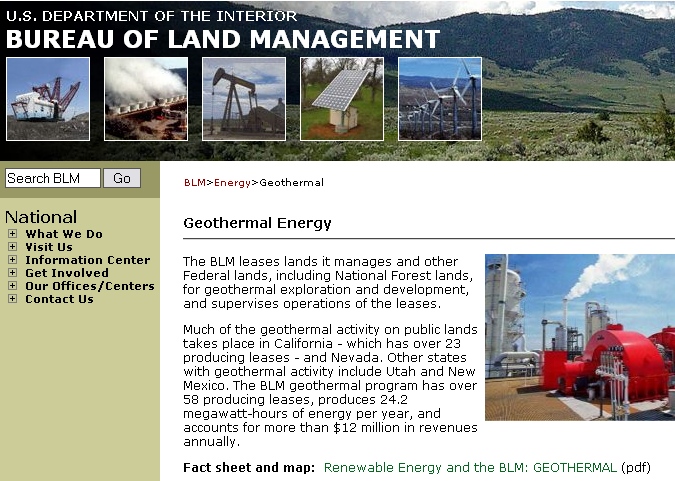Inconsistent US regulatory oversight unnecessarily confusing

The Deputy Inspector General of the U.S. Department of the Interior reports that different regulatory approach of the Bureau of Land Management creates unnecessary confusion for geothermal development of federal land.
The Deputy Inspector General of the U.S. Department of the Interior recently published a report on the activities of the U.S. Bureau of Land Management, talking about that the current “regulatory approach differs by region” and thereby “creating confusion.
The BLM oversees the development of geothermal resources on federal land and is currently faced with a variety of regulation and not standardized inspection and enforcement program. BLM has been pushing forwards on behalf of the federal government to increase the clean energy output from federal lands beyond the initial target of 10,000 MW by 2015.
In the past the BLM has been criticized on too lengthy permitting and lease sale processes, but has in 2007 updated its geothermal regulations. At the same time old operational orders continue to complicate things and provide a rather unclear order and order language as it relates among others to earthquake hazards, which are not reflected in the regulations.
The geothermal sector in the U.S. is looking at “hydraulic shearing” for stimulation work that could extend the potential for geothermal energy development in the U.S. beyond current know areas.
The report published now, clearly states that there are no safety problems as a result of a standard inspection and enforcement system, but there is inconsistent oversight by field offices of BLM and difficulties in the sharing of information. There are – so the Director General – “different enforcement expectations for industry depending on where their operations are located”.
As part of the report, BLM has agreed to review and update criteria for orders and inspection, as well as to review staffing levels and the creation of new guidance on seismicity hazards.
Source: Washington Guardian